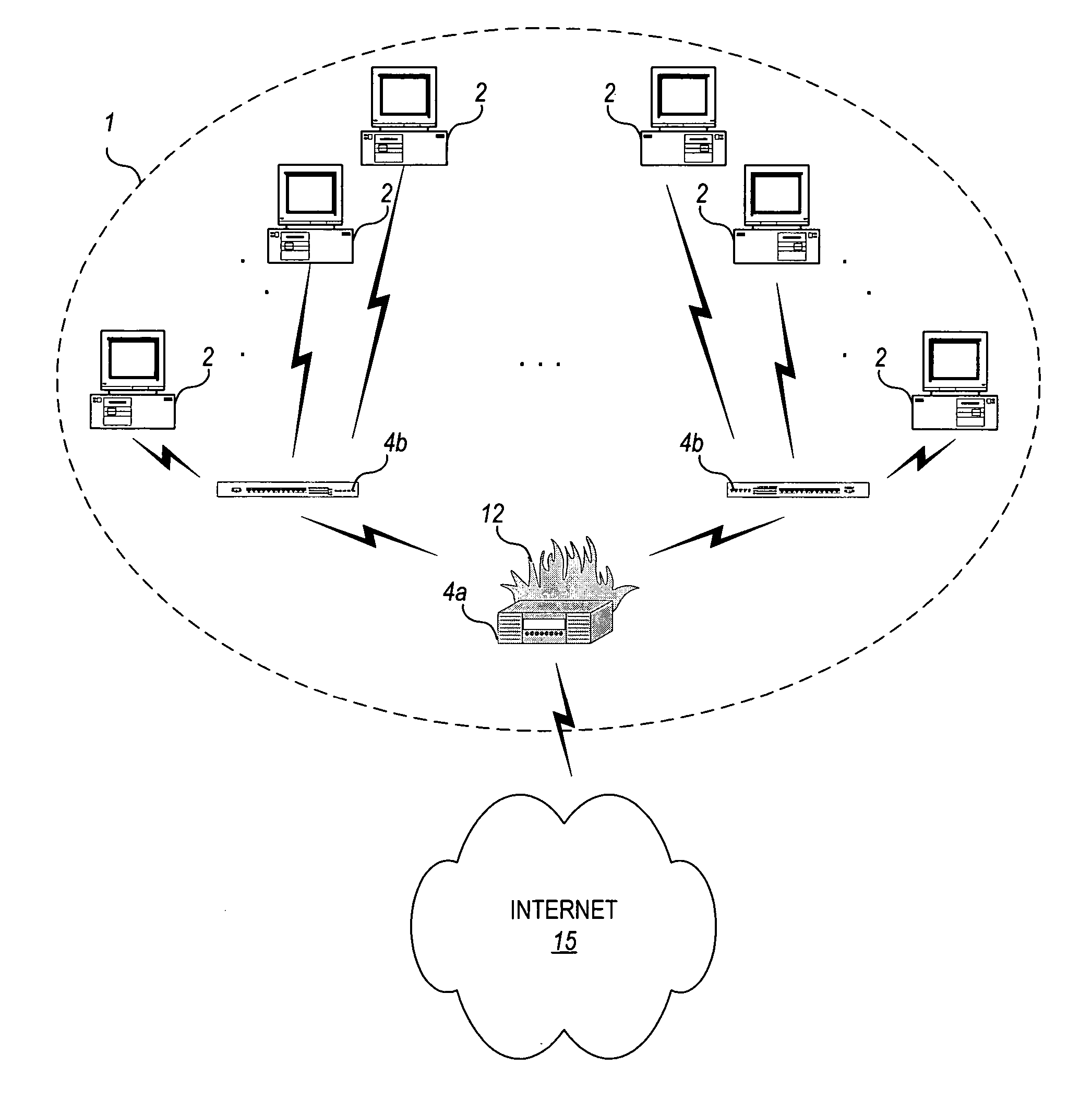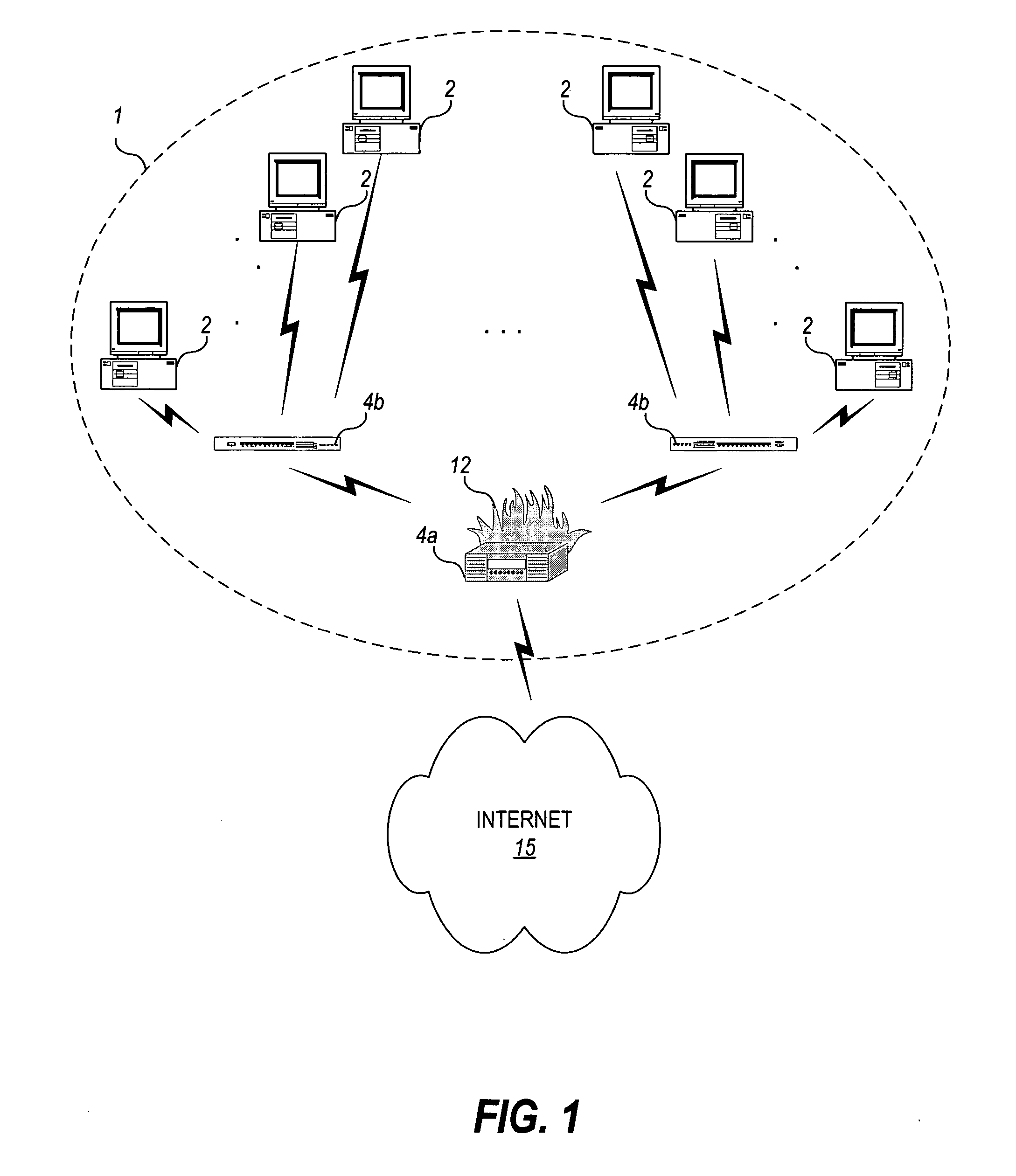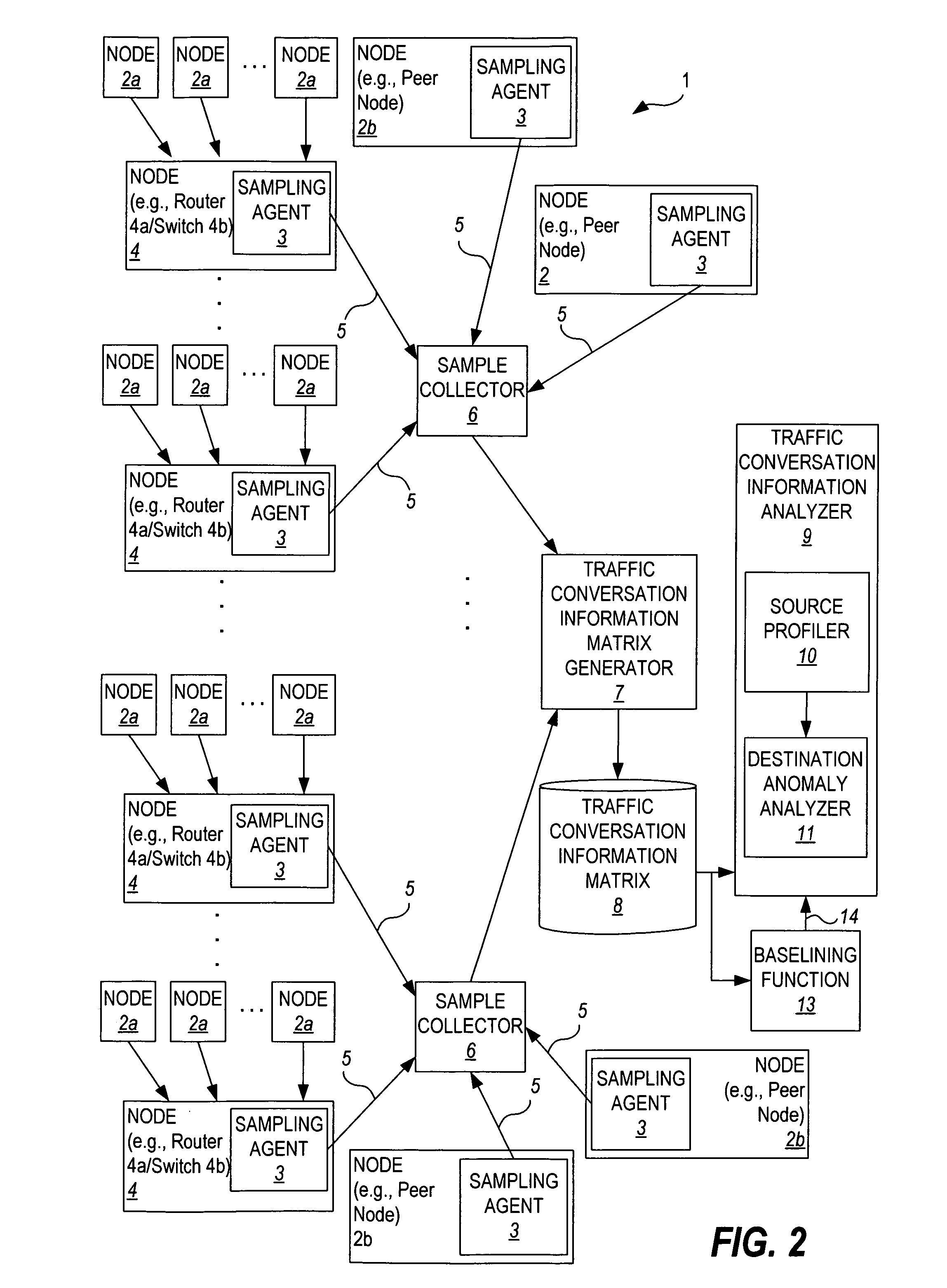Traffic anomaly analysis for the detection of aberrant network code
a traffic anomaly and network code technology, applied in the field of computer networks, can solve the problems of malicious code traveling over the very services, increasing the consumption of network bandwidth to the detriment of the performance of the network, and infected network nodes in performing legitimate operations,
- Summary
- Abstract
- Description
- Claims
- Application Information
AI Technical Summary
Benefits of technology
Problems solved by technology
Method used
Image
Examples
Embodiment Construction
[0037] The present invention is a technique for detecting nodes of an enterprise network that are infected with aberrant code by analyzing their network traffic conversation characteristics. The technique of the invention operates to identify what is aberrant by observing what is considered normal traffic conversation behavior during a given analysis period over the entire population of nodes in the enterprise network, and then analyzing the behavior of source hosts during the analysis period relative to the normal behavior during this analysis period to identify any “suspected infected” nodes. The infected behavior is then confirmed by analyzing the characteristics of the destination hosts that the “suspected infected” nodes attempt to contact.
[0038] The following definitions apply herein:
[0039]“network”—a set of hosts that are able to communicate with each other;
[0040]“enterprise network”—a network or subset of a network, typically, but not necessarily, under common administrat...
PUM
 Login to View More
Login to View More Abstract
Description
Claims
Application Information
 Login to View More
Login to View More - R&D
- Intellectual Property
- Life Sciences
- Materials
- Tech Scout
- Unparalleled Data Quality
- Higher Quality Content
- 60% Fewer Hallucinations
Browse by: Latest US Patents, China's latest patents, Technical Efficacy Thesaurus, Application Domain, Technology Topic, Popular Technical Reports.
© 2025 PatSnap. All rights reserved.Legal|Privacy policy|Modern Slavery Act Transparency Statement|Sitemap|About US| Contact US: help@patsnap.com



